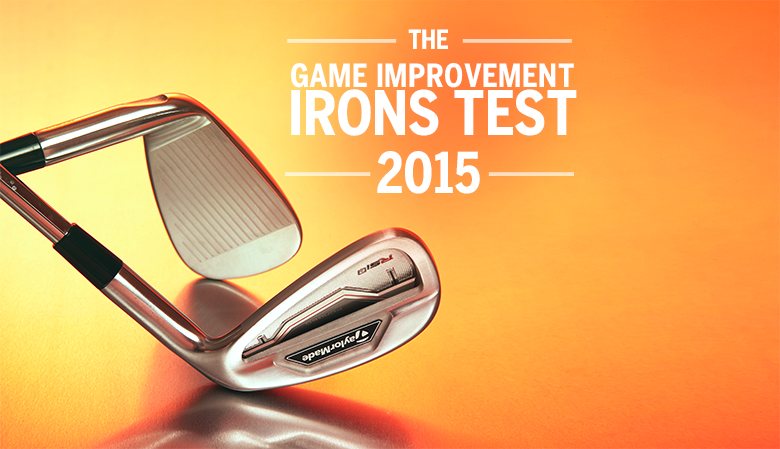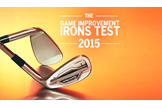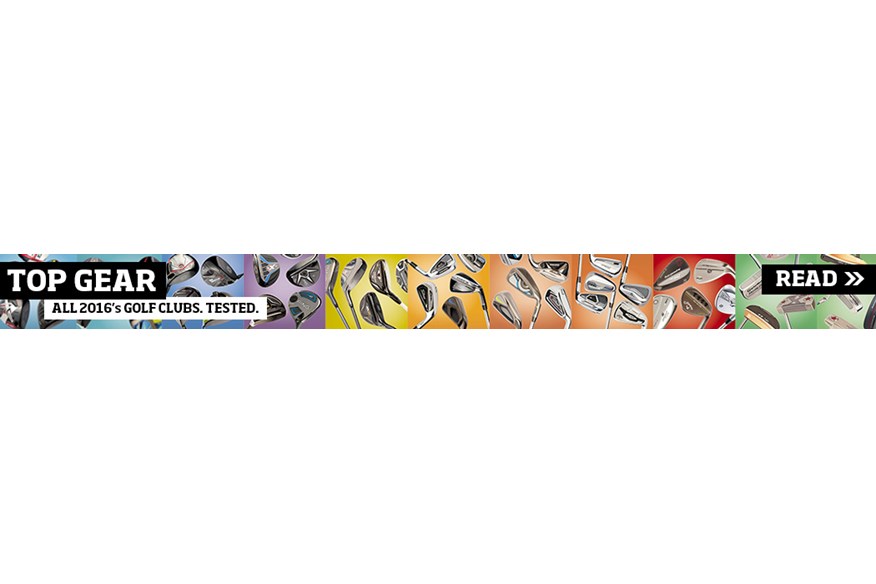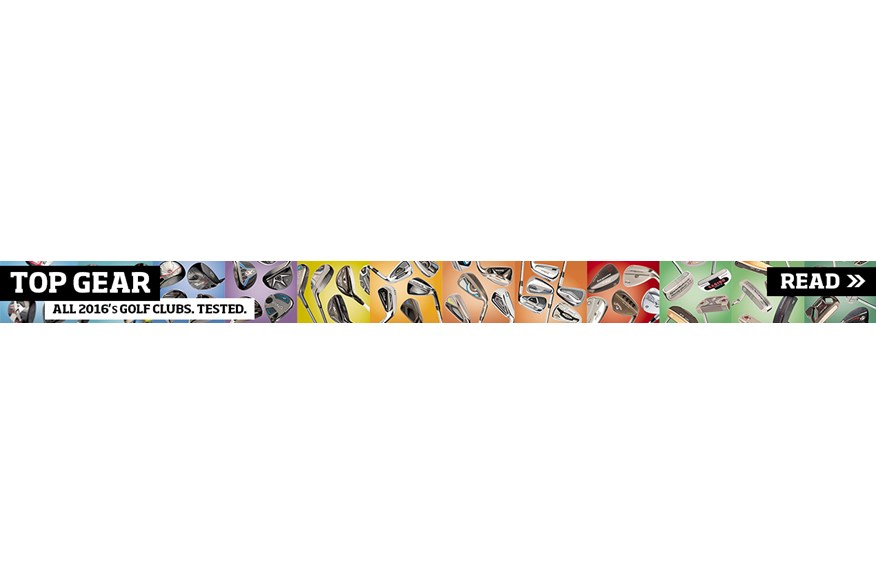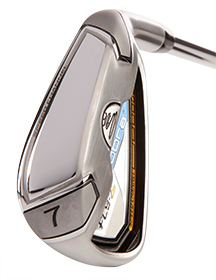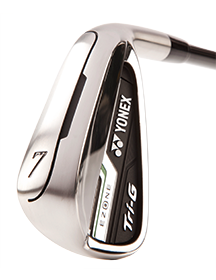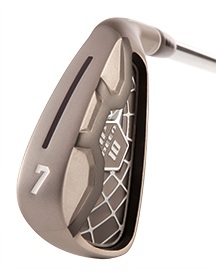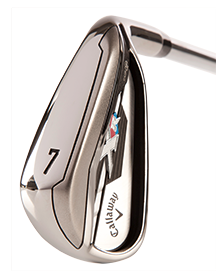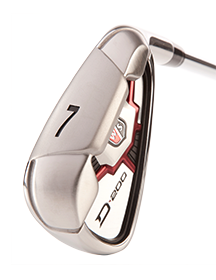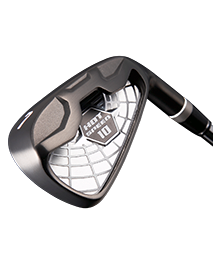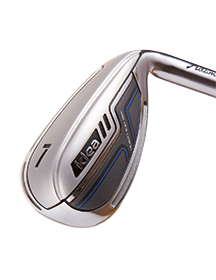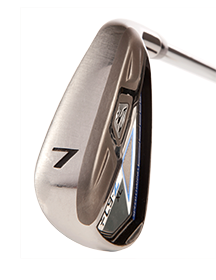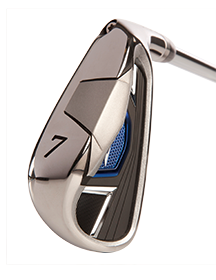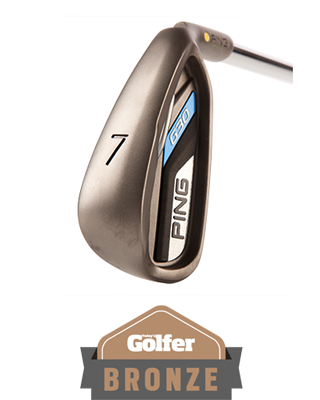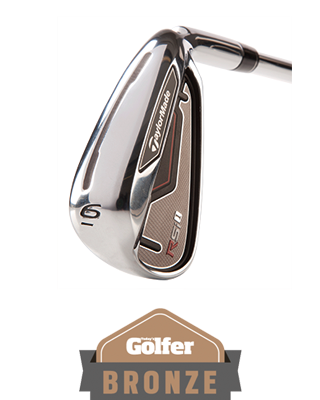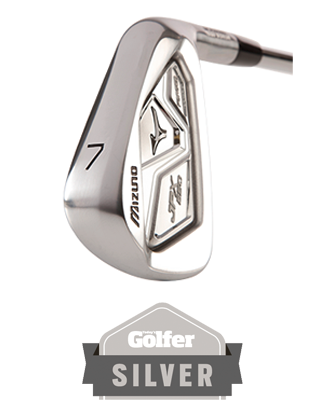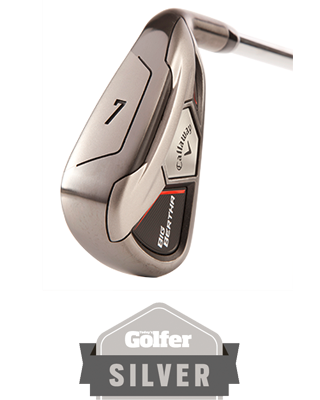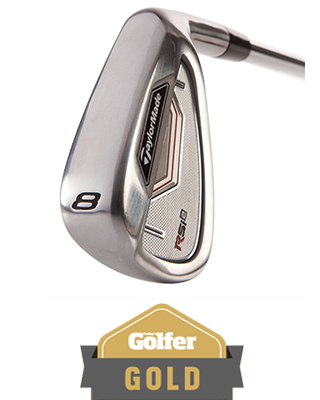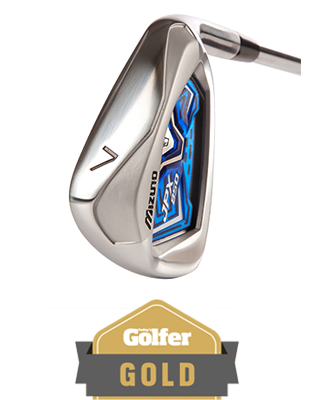Game Improvement Irons Test 2015
Last updated:
Game improvement irons, it must be said, are tragically underused by the nation’s golfers. They tend to go further, offer more forgiveness and have a wider sole to help reduce the effect of heavy strikes.
For the 2016 game improvment irons test click here
Yet pride forces many of us to opt for a set of “better player” irons because they’re what we want to be seen using. More fool us, especially as a growing number of elite players do in fact use game-improver irons.
• For the 2016 Game-Improvement Irons test click here
We took 18 of the latest models to The Belfry to be tested by resident pro James Ridyard and two mid-handicap golfers. Their feedback and Trackman stats helped us decide which are the best game improvement irons on the market today.
COMPARE PRICES
Our panel of testers

James Ridyard
Handicap: Pro
Club Speed: 89mph
Current Irons: Nike VR Pro

David Fletcher
Handicap: 18
Club Speed: 74mph
Current Irons: TaylorMade R11

Alex Dalton
Handicap: 12
Club Speed: 91mph
Current Irons: Titleist 710 AP1
How We Tested The 18 Irons
We’ve split the Game Improvement irons in this test into two categories – Game Improver (typically used by golfers of 9-16 handicap) and Super Game Improver (17 and over). Ball- striking is of course not the only factor in determining your handicap, so these figures are a guide only. Super Game Improver irons tend to be larger, and therefore more forgiving, and come in stronger lofts and longer shaft lengths. Game Improver irons tend to me more compact and feature thinner top lines and narrower soles. We also appreciate there is plenty of crossover between models, which is why testers hit all models in both categories.

- Each tester was given as much time as they wanted to warm up before testing. They rated the clubs out of 10 for Looks, Feel/Sound, Forgiveness and Innovation. Forgiveness is hard to quantify; only the golfer knows how well the club has rescued a poor strike. But we assessed the TrackMan data on what felt like heel and toe strikes. Our Innovation category is new for this year and is our panel’s opinion on how each iron’s technology advances the category, how well executed it is and how well each tester felt it enhanced the club’s performance.
- We have also given a performance score out of 10 for each iron in the test. That figure is based on consistency, rather than outright distance or accuracy. With irons, distance control shot after shot is everything. We have published the average distance and dispersion for each tester for every club to help your buying decision further, but distance or dispersion alone hasn’t been used to form the Performance Score. Instead, we have assessed how consistent the distances (front to back) and dispersions (side to side) were and attributed a mark out of 10 using a sliding scale. This score was then added to the subjective feedback to create an overall score out of 10. Performance data was collected with a 7-iron and we have published the static loft and shaft length for each 7-iron to provide some context for the distance and dispersion figures.
Who Took Part
We invited all major manufacturers to be involved in our test. They provided stiff and regular steel-shafted 7-irons in the length and lie that came as standard. Some manufacturers also provided a graphite shaft option, which James fitted to the testers where appropriate.
Our testers were selected because they have been fitted for standard length and lie irons within the last year. James also uses this spec.
MD Golf STR10
Cobra Fly-Z
Yonex EZONE Tri-G
Nike Vapor Speed
Benross RIP SPEED 10
Callaway XR
Wilson Staff D200
Benross HOT Speed 10
Adams New Idea
Cobra Fly-Z XL
Yonex Z-Force
Ping Karsten
Ping G30
TaylorMade RSI 1
Mizuno JPX 850 Forged
Callaway Big Bertha
TaylorMade RSI 2
Mizuno JPX 850
Facts, Figures and Top Performers
The chart below takes represents the average overall distance and dispersion for each iron, taking into account the performances of all three testers. It is designed to provide you with some insight into how long and straight each game improvement iron was for different swing speeds and abilities. The dispersion element takes into account whether testers tended to miss the target left or right. Remember, we have not used distance or dispersion to rank the irons, so the Award Winners may not necessarily feature strongly here. We rank irons on how consistent the distance and dispersion was for all counting shots. When hitting irons into the green, accuracy and distance control is everything!
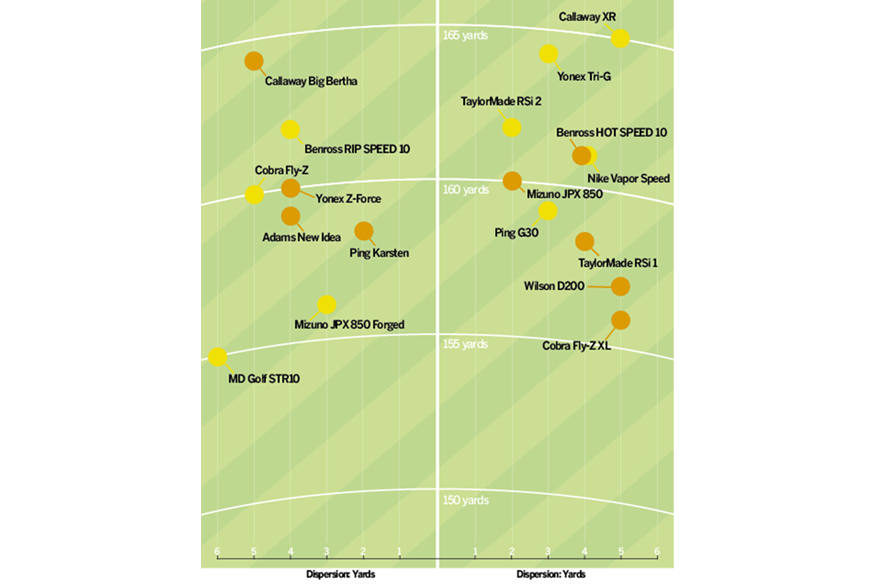
Longest on test
The Callaway XR was the longest iron on test across both categories, achieving the highest average overall distance for all three testers’ performances.
Distance machine
All three testers achieved their highest club speed averages with the Callaway Big Bertha. It also hit the longest shot on test, a 187-yard bomb by 12-handicapper Alex.
Straight talker
Ping Karsten was by far the straightest iron on test. The length of the face from heel to toe as well as the overall size made it effortless to hit well.
Consistency is king
The TaylorMade RSi 2 achieved the best distance consistency, a big part of its success. By this, we mean the distance between the shortest and longest shots was the smallest.
Stopping Power
Wilson D200 should get a mention here. It was the highest spinning iron on test, which as a result created the steepest descent angle into landing.
High roller
Gold Award-winning Mizuno JPX 850 was the highest-launching iron on test, getting the ball in the air without generating too much spin.
